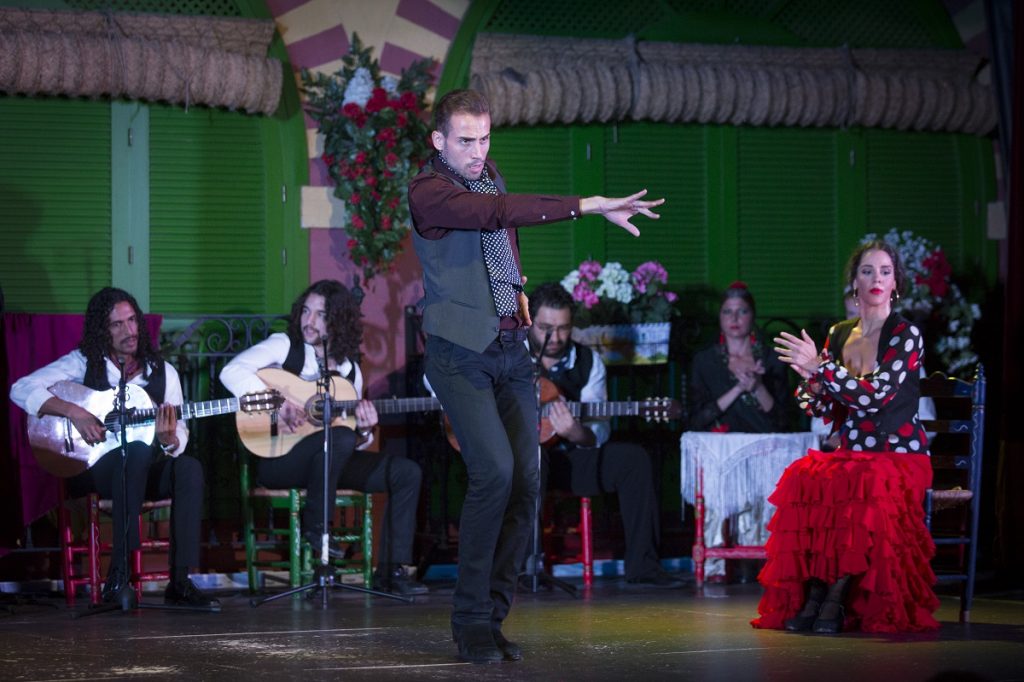
Farruca is one of the most recent flamenco styles and it became popular in the first half of the 20th century. Perhaps it is one of the lesser-known styles for the general public. As with some aspects of this art, its history and origin is not very clear, there are several currents on how it came about and where it came from.
On the one hand, there are those who indicate that the farruca derives from some theatrical tune or variants composed for zarzuela. This is the case of the lyrical sainete, ‘Alma de Dios’ (Soul of God), which was composed by José Serrano in 1907 and in which he included a farruca.
Meanwhile, other sources place this style as a cante (singing) of Galician-Asturian origin. This connection of the farruca with Galicia is based on the fact that some of the couplets allude to this land and, in addition, the descending melody that is performed on the vowel ‘a’, at the end of each couplet and to end the cante, also keeps that Galician-Asturian relationship.
The use of the expression «con el tran-tran-tran-tran-treiro» with which singing begins, is also another factor that can lead us to relate farruca with Galicia. However, this flamenco style has many musical elements from other styles such as tangos.
As for the name of this flamenco style, there are also several opinions. Some authors point out that it is the term with which in Andalusia Galician and Asturian immigrants were called. On the other hand, ‘Farrucos’ is the way to call the ‘Franciscos’ in Andalusian lands.
If we consult the etymological origin of the word farruca, we find that it comes from the Arabic ‘faruq’, whose meaning is “brave”.
Regarding the origin of farruca, there is a historical moment that is key to its birth. In the 19th century, there was a great wave of Galicians who migrated to the American continent. At that time, these singings arose inspired by the ‘morriña‘ of absent love.
Taking into account the connection proposed, rather than talking about it being a style of Galician origin, we can say that farruca is a ‘agallegado‘ flamenco style.
In fact, farruca began to form part of flamenco in Seville with the arrival of Manuel Torre in the city in 1887. Singers known as El Mochuelo, Manuel Pavón and Pepe Marchena have been some of the artists who have incorporated this flamenco style into their habitual repertoire.
As for the guitar, the farruca was interpreted by masters such as Niño Ricardo, Luis Marvillas, Sabicas, Ramón Montoya, Niño Miguel, Manolo Sanlúcar or Paco de Lucía.
It was not until the beginning of the 20th century, when dance was incorporated, at which time farruca was consolidated as a flamenco form ‘by right’.

Farruca is characterized by the expression with which singing begins with various tunes typical of this flamenco genre. It is sung over a couplet of 4 octosyllabic verses, which rhyme second and fourth. The ostinato in the guitar introduction is reminiscent of the tanguillos of Cádiz and the garrotín. The binary rhythm of the touch is choppy, in the style of Argentine tango or Spanish pasodoble. It is sung over a couplet of 4 octosyllabic verses that rhyme second and fourth.
As for the dance, it is characterized by the way of raising the arms, as well as the temperance and control of the markings. It is a style with a sober, elegant character and whose strength is marked by ‘zapateado’, full of setbacks and changes of pace.
It is attributed to Faíco, the flamenco adaptation of this dance. He created it in 1908, on the music of Ramón Montoya, managing to extract from the rhythm of the farruca, the garrotín and the tangos, dance steps and clickings unusual in the time.
The way in which this triana dancer interpreted the farruca conquered the public of Madrid and Barcelona, where it began to be one of the most sought-after styles in the shows, which were held in tablaos at the beginning of the 20th century.
La farruca is a dance performed more by men than by women, although Tía Juana, La Faraona, María de Albaicín or Rafaela la Tanguera were the female replica of this style. It is always danced with pants to highlight the zapateado that characterizes it so much. It runs in a confined space and is accompanied by ‘pitos’ (finger snaps).
Nowadays, farruca is a style of dance and guitar rather than singing. However, it can be heard in performances that accompany the dance or in the flamenco shows that are held in the tablaos.
© 2024 El Palacio Andaluz. All rights reserved.